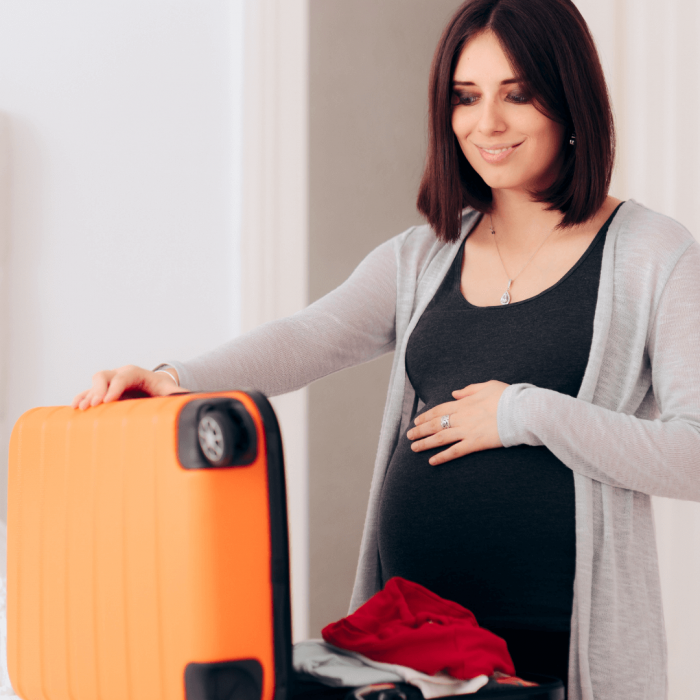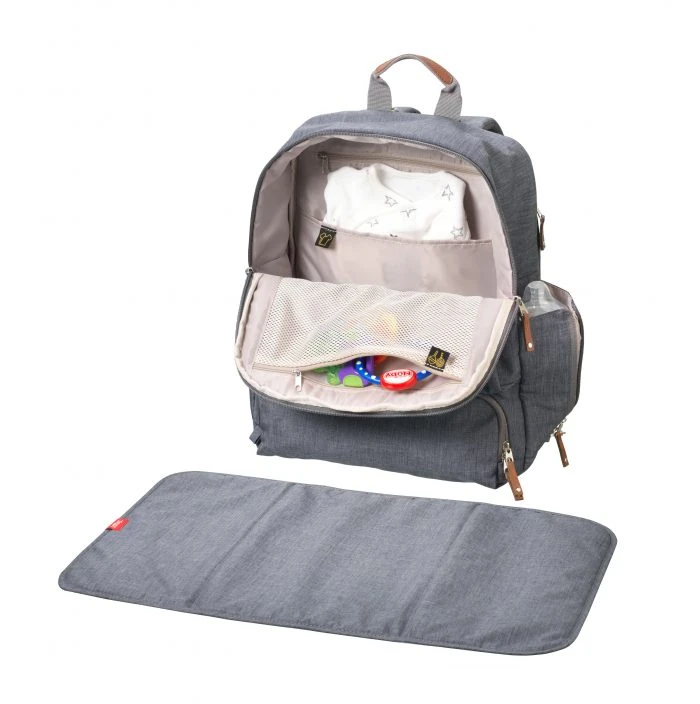Whether your due date is just around the corner or you’re planning in advance, you might be wondering how you can prepare for your trip to the maternity ward. To help you get ready for giving birth, our team have explored some of the most commonly asked questions about labour. But first, let’s take a look at some of the things you should pack in your hospital bag.

The essentials you should pack
If everything goes smoothly, you’re likely to be in the maternity ward for anywhere between 6-24 hours. During this time, you’re going to need some things to keep yourself and your soon-to-be-newborn baby comfortable.
Essentials for yourself
Your birthing plans and notes
• Pillows
• Breast pads
• Maternity pads
• A nursing pillow (if you wish to breastfeed)
• 2 comfortable bras
• 6 pairs of knickers (reusable or disposable)
• Your wash bag (including toothpaste, toothbrush, soap, and deodorant)
• Calming pastimes (such as books or tablets for watching films or listening to podcasts)
• Any important medication
Essentials for your newborn baby
You’ll also need to pack any newborn essentials for your baby – but try not to overpack! You and your baby will be home before you know it.

• Baby clothes (such as bodysuits and vests)
• Dummies and bibs
• Baby changing backpack (filled with nappies and wipes)
• Scratch mittens, a hat, and socks
• Baby bottles (if you wish to bottlefeed)
• Formula feeding appliances (if you’re not planning on breastfeeding)
• A car seat (for the much-awaited journey home)
What to wear during labour
More than anything else, you’re going to want to wear something comfortable during labour. The NHS recommends clothing that is loose and won’t hinder your movement, such as a maternity dress. This will also help your midwife deliver your baby without any unnecessary problems.
And why stop there? You might as well be extra comfortable while you’re in the maternity ward. You’re free to bring a warm dressing down, fluffy socks, and cosy slippers. A few home comforts will go a long way!
Commonly asked labour questions
We’ve collected some of the most commonly asked questions about labour. Here are some answers we think might help you along the way.
How to induce labour
If you’re past your due date, you might choose to be induced. A midwife will give you a tablet or gel to soften the neck of your uterus. On the other hand, you might be given a hormonal drip. Either way, you’re in good hands.
What to do after a sweep to bring on labour
A membrane sweep, or a cervical sweep, is a common alternative to being induced. This is offered to mothers before inducing labour, although this is also completely optional. Essentially, the doctor uses their finger to separate the amniotic sac from your cervix.
You’re allowed to go home after this, whether you’d like to rest before becoming a parent or bounce on an exercise ball to encourage labour. And apart from possible bleeding, you shouldn’t experience any discomfort.
Lost mucus plug after sweep – how long till labour?
After a sweep, the cervix softens and you might experience some mucus-like discharge. This is completely normal, and it actually means that you’re one step closer to giving birth. There isn’t an average time for labour to start after a lost mucus plug though. It can take anywhere between a few hours and a few weeks.
How to induce labour naturally
Being induced isn’t for everyone, so you’re always given the choice to try to go down the natural route. There are lots of tips and tricks to naturally induce labour, whether you’re in the mood for some spicy foods or a long walk.
When to go to hospital during labour
Labour is a different experience for everyone, so it can be difficult to know when you should go to the hospital. Generally, doctors advise you to ring your midwife when your contractions last for at least 60 seconds or happen every 5 minutes. But you’re free to ring the hospital and ask for advice whenever you think you’re in labour.
How long does labour last?
There is no right or wrong answer to this. Everyone’s experience with labour is different, so try not to overthink how long it might take. On average, experts suggest that your labour might take 5 hours, but sometimes it can take minutes. You never know!
How long is active labour?
When your cervix is 6–10cm dilated, you’re in active labour. This is probably where you’ll feel more pressure in your back and your waters might also break. Usually, this lasts between 4–8 hours, but this can vary depending on your own circumstances.
What does labour feel like?
More often than not, labour is a painful experience. Some mothers have described the pain as being similar to extreme period cramps, although this can be accompanied by back pain and nausea. You might also experience these cramps towards the end of your pregnancy, otherwise known as Braxton Hicks cramps.
Labour might seem like an overwhelming experience. Try to remember that your body was created for birthing a child, there are trained professionals ready to help you through the process, and you’ll be able to meet your little one and start your new life together soon.
